
|
|
|
|
|
|
2000
The world celebrates the turn of the millennium
The year 2000 was the first year of the 2000s decade. Popular culture holds the year 2000 as the first year of the 21st century and third millennium, due to a tendency to group the years according to decimal values, as if year zero were counted.
But according to the Gregorian calendar, this distinction actually falls to the year 2001, because the first century was retroactively said to have commenced with year AD 1. Since the calendar has no year "zero", its first millennium spans from years 1 to 1000, inclusively, its second millennium from years 1001 to 2000 and its third from 2001 to 3000.
On 1st January 2000, people celebrated the end of the 20th century and indeed the second millennium and welcomed the dawn of a whole new millennium. Problems resulting from the so-called Y2K bug proved to be far fewer than some experts had feared. This concern had been widespread for several years prior, with predictions that computers would fail when the date shifted over from 1999 to 2000.

The Pyrenean Ibex goes extinct
One of two subspecies of Spanish Ibex, the Pyrenean Ibex once ranged across the Pyrenees in France and Spain and the surrounding area, including the Basque Country, Navarre, north Aragon and north Catalonia. A few hundred years ago they were numerous, but by 1900 their numbers had fallen to less than 100. After 1910 their numbers never rose above 40.
The last natural Pyrenean Ibex, a female named Celia, was found dead on 6th January 2000 next to a fallen tree. Although her cause of death is known, the reason for the extinction of the subspecies as a whole is a mystery. Hypotheses include the inability to compete with other species for food, infections and diseases, and poaching.
In January 2009, the Pyrenean Ibex became the first taxon ever to become "un-extinct" – for seven minutes – when a cloned female was born alive, before dying from lung defects.*

Sony launches the PlayStation 2
On 4th March 2000, Sony made a significant leap in the gaming industry with the launch of its PlayStation 2 (PS2) in Japan, which eventually became one of the best-selling video game consoles of all time. The launch was met with much fanfare and anticipation, given that the PS2 was not just a gaming console but also a multimedia device with the ability to play DVDs, a feature that contributed to the spread of the DVD format. Boasting superior graphics, a vast library of games, and backward compatibility with PlayStation 1 games, it quickly gained popularity. Upon its release, customers queued for hours and even days to get their hands on the groundbreaking machine, and despite initial manufacturing delays leading to stock shortages, the PS2 dramatically reshaped the landscape of home entertainment and firmly established Sony at the forefront of the gaming industry.

The dot-com bubble bursts
The dot-com bubble was a speculative bubble covering roughly 1998–2000, during which stock markets in industrialised nations saw their equity value rise sharply from growth in the more recent Internet sector and related technology fields.
A combination of rapidly increasing stock prices, market confidence that the companies would turn future profits, individual speculation in stocks, and widely available venture capital created an environment in which many investors were willing to overlook traditional metrics in favour of confidence in technological advancements.
The bubble reached its peak on 10th March 2000, with the NASDAQ at 5132. This was followed by a crash with huge numbers of startups going bust. Between 2000 and 2002, more than $5 trillion was wiped off the value of technology companies.
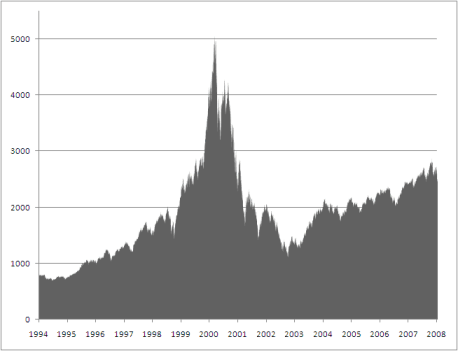
The ILOVEYOU computer virus spreads around the world
On 5th May 2000, a major computer virus known as ILOVEYOU emerged, causing widespread panic and disruption across the globe. Originating in the Philippines, ILOVEYOU spread rapidly through email attachments, disguised as a love confession. Once opened, it unleashed its destructive payload, overwriting files, spreading to contacts, and wreaking havoc on computer systems. Its ingenious social engineering tactics, appealing to human emotions, contributed to its rapid spread, infecting millions of computers within hours. The ILOVEYOU virus highlighted the vulnerabilities of early Internet infrastructure and raised awareness about the importance of cybersecurity, prompting a significant shift in how individuals and organisations approached online security.

Screenshot of the ILOVEYOU worm of 2000. Wikimedia Commons CC BY-SA 4.0
Vladimir Putin is elected president of Russia
The inauguration of President Vladimir Putin occurred on 7th May 2000. He rose to the presidency after the unexpected resignation of Boris Yeltsin. He continued through with many of his same policies. Putin began his presidency with aggressive legal reforms of the Russian government. One of his first actions was to group the 89 federal subjects (states of the Russian Federation) into seven federal districts, each directly reporting to his office in order to facilitate his administration.
Overall, Putin worked to reorganise the government in a stricter and more vertically structured manner. From this, he began to focus on domestic change, beginning with a refinement of criminal, tax, and land law. He addressed some of the more serious demographic trends in Russia – including its high death rate, cyclical poverty and housing issues. During his two terms, Russia made huge gains in purchasing power, saw GDP increase six-fold and experienced rapid increases in industry and investment, by 76% and 125% respectively. Poverty fell by 16% and a flat tax rate was introduced.
From 2000 to 2008, oil and natural gas more than doubled their share of GDP. Despite these economic gains, inflation remained a problem, while the gap between rich and poor continued to widen.
In 2006, Russia hosted the G8 Summit for the first time since joining the forum in 1997. Throughout his presidency, Putin maintained a cool relationship with the West, though often criticised foreign countries and their affairs, notably the U.S. invasion of Iraq.
Putin himself was criticised for suppression of the media and his borderline fascist policies. After his reelection, accusations were made that he suppressed other political factions and reduced pluralism in Russian society. Many in the West saw him as anti-democratic.
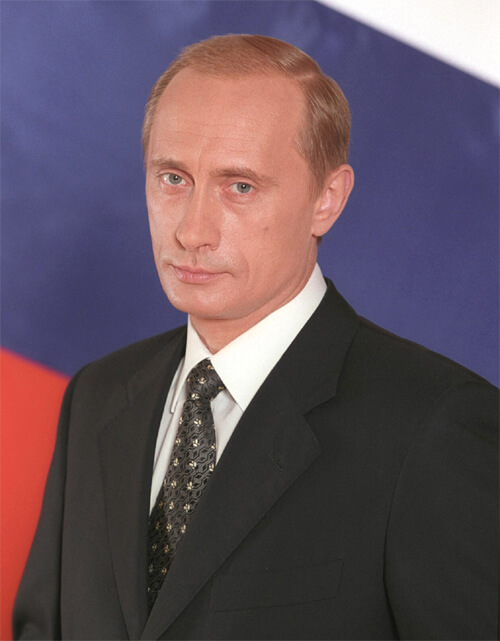
Credit: www.kremlin.ru
Euro 2000 is hosted by Belgium and the Netherlands
Euro 2000 was held between 10th June and 2nd July 2000. Consisting of 31 matches played between 16 teams, this was the first UEFA European football championship to be hosted by two countries; in this case, Belgium and the Netherlands. France defeated Italy 2-1 in the final.

Credit: Presidenza della Repubblica
Opening of the Øresund Bridge
The Øresund Bridge was officially completed and opened to the public on 1st July 2000, connecting Denmark and Sweden. Ferry links had already existed between the two countries, but this new route provided the first direct road and rail link.
Stretching approximately 16 km (10 mi), the Øresund Bridge project consisted of three main parts – an 8 km cable-stayed bridge projecting outwards from the Swedish coast to the 4 km artificial island of Peberholm and then 4 km of undersea tunnel to the Danish coast.
The project substantially cut travel times – from one hour, to just 10 minutes – and greatly facilitated the flow of goods and people, fostering economic growth and cultural exchange between the Danish capital, Copenhagen, and the Swedish city of Malmö, with around 20,000 commuters crossing it daily.
When opened, the bridge section became the world's longest cable-stayed bridge for combined road and high-speed rail traffic. Until 2019, it held the title for the longest road-rail bridge in Europe, until the construction of the Crimean Bridge. The artificial island of Peberholm, created as a transition point between the bridge and tunnel, developed into a haven for flora and fauna. The construction of the Øresund Bridge significantly enhanced the integration of the Øresund region and its completion marked a notable step forward in European transportation infrastructure.
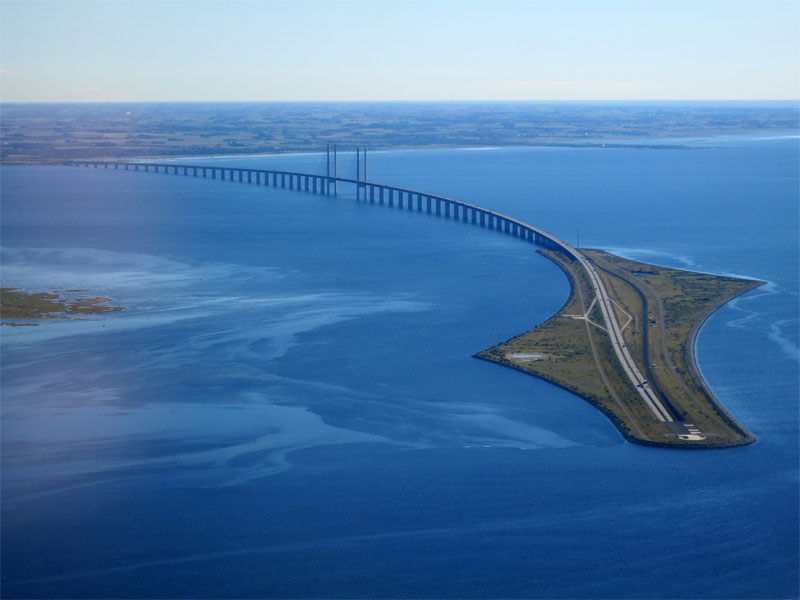
Nick-D, CC BY-SA 4.0, via Wikimedia Commons
Fast Track Land Reform begins in Zimbabwe
The Zimbabwe Land Reforms, initiated on 15th July 2000, were a series of measures taken by President Robert Mugabe's government to forcibly redistribute land from the country's white minority to the black majority. The plan was primarily executed through the controversial Fast Track Land Reform Program, under which thousands of white-owned farms were seized without compensation, ostensibly to rectify racial imbalances in land ownership stemming from colonial rule.
These actions were often violent, leading to deaths, human rights abuses, and widespread international condemnation. While the reforms were initially popular among some segments of Zimbabwe's population, they had severe negative impacts on the country's economy, leading to a sharp decline in agricultural production and contributing to hyperinflation. The land reforms would remain a contentious issue in Zimbabwe's political and economic landscape for many years.

Kasomo chaila, CC BY-SA 4.0, via Wikimedia Commons
Concorde crashes in France, killing 113 people
Air France Flight 4590 was a Concorde flight from Charles de Gaulle International Airport, near Paris, France, going to JFK International Airport in New York City. On 25th July 2000 it crashed in Gonesse, France – killing all 100 passengers and nine crew on board the flight, as well as four people on the ground. As a result of this crash – together with the economic effects of 9/11 – the iconic aircraft was retired in 2003.
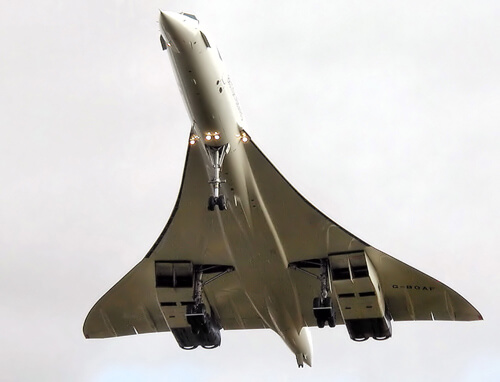
Sinking of the Kursk submarine
Measuring 154 m (505 ft), more than twice the length of a Boeing 747, Kursk was one of the largest submarines ever built. In August 2000, this Russian vessel joined the "Summer-X" exercise in the Barents Sea, the first large-scale naval exercise planned by Russia in more than a decade.
Two days into the exercise, on 12th August, an explosion occurred on board, caused by the failure of one of its torpedoes. This initial blast, followed by a much larger explosion, led to the vessel sinking to the sea floor, bottoming at 108 m (354 ft) about 135 km (84 mi) off Severomorsk.
While most crew members died immediately, some survived the initial incident. Evidence found during the subsequent investigation – including a note on the body of one sailor – indicated that a group of 23 men had remained alive in a rear compartment of the submarine for at least several hours, before succumbing to the effects of hypothermia, high pressure, or the toxic atmosphere due to a lack of oxygen.
The Russian government faced significant criticism for its handling of the disaster, including its delay in accepting international help, lack of transparency, and the insufficient support provided to the families of the deceased crew members. It took more than a week before Russian officials publicly acknowledged the accident, and it was not until May 2001 that the bodies of the crew members were recovered, and the wreckage raised. The Kursk tragedy highlighted the deteriorating condition of Russia's military infrastructure and became a major domestic and international incident for President Vladimir Putin, who had just taken office a few months prior.
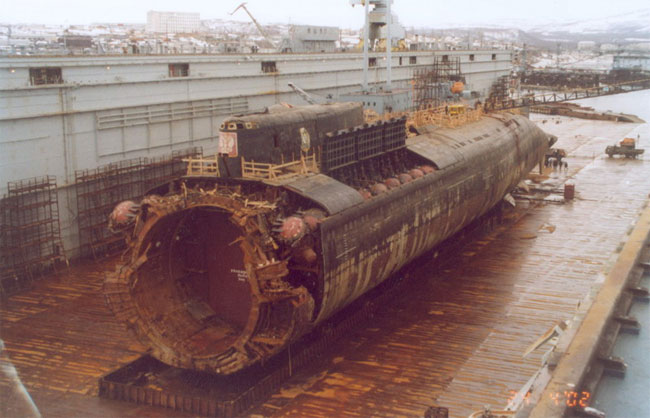
Sydney hosts the Olympic Games
Held from 15th September to 1st October 2000, this was the second occasion that the Olympics had been hosted in the Southern Hemisphere, the first being in Melbourne in 1956. The United States won the most medals with 93, while Australia came in 4th with 58.
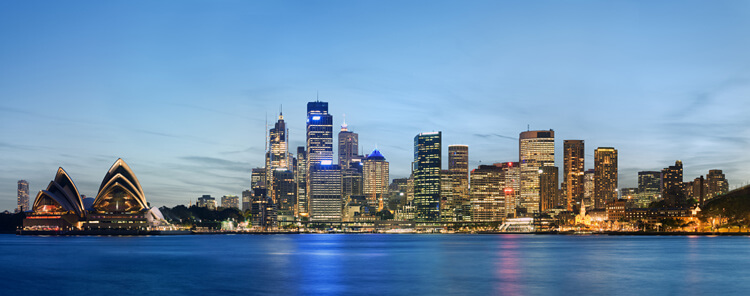
© David
Iliff | Dreamstime.com
Personal home computers break the 1 gigahertz barrier
During 2000, clock speeds in home PCs were undergoing their biggest ever rate of increase. Later in the decade, however, this race to produce ever more gigahertz was abandoned in favour of multi-core systems.
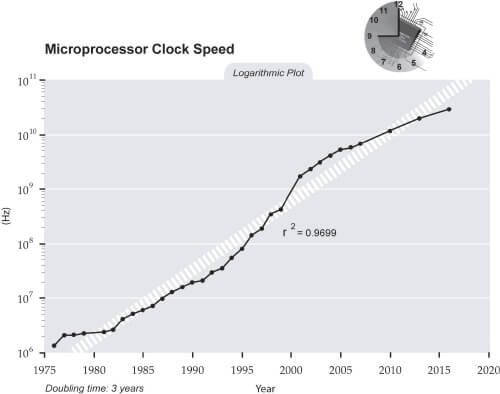
Credit: Ray Kurzweil, The Singularity is Near
Bombing of USS Cole
On 12th October 2000, terrorist group al-Qaeda conducted a suicide bombing against USS Cole, a guided missile destroyer of the United States Navy, while she was being refuelled in Yemen's Aden harbour. 17 U.S. Navy sailors were killed and 37 injured in the deadliest attack against a United States naval vessel since the USS Stark incident in 1987.
Al-Qaeda claimed responsibility. A U.S. judge held Sudan liable for the attack, while another released more than $13 million in Sudanese frozen assets to the relatives of those killed.
The United States Navy reconsidered its rules of engagement in response to this attack. On 30th October 2020, Sudan and the United States signed a bilateral claims agreement to compensate families of the sailors who died in the bombing. The agreement entered into force in February 2021.
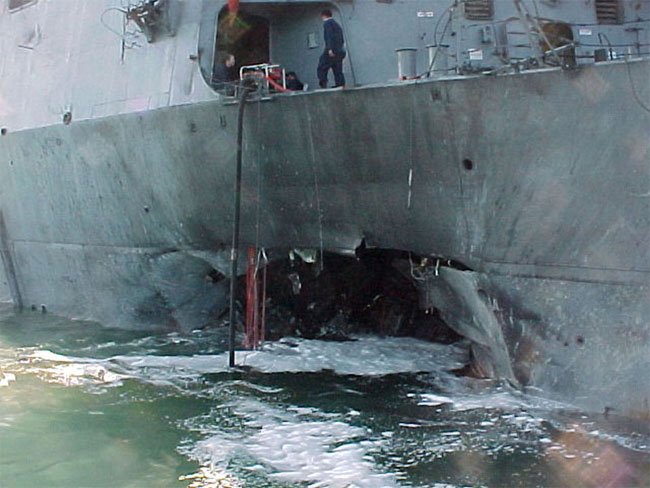
Kaprun tunnel disaster
The Kaprun disaster occurred on 11th November 2000 in Kaprun, Austria, claiming the lives of 155 people. It happened when a train carrying skiers and snowboarders to the Kitzsteinhorn glacier in the Austrian Alps caught fire in a tunnel.
The fire started in an electric heater in the unattended conductor's cabin at the back of the train, rapidly consuming the vehicle due to the flammable hydraulic brake fluid and plastic materials. The train was almost halfway up the mountain when it came to a halt. Smoke filled the tunnel, which was steeply inclined and acted like a giant blast furnace, sucking oxygen in from the bottom and sending toxic smoke, heat, and the fire itself billowing upwards.
Only 12 managed to escape – by breaking a window and going downwards past the fire and below the smoke. All passengers ascending on foot, as well as the train conductor, were asphyxiated by the smoke and then burned by the fire. A further two on the descending train and three in the mountain station also died, bringing the final death toll to 155, making it one of the deadliest accidents in the history of alpine transportation.

Credit: BBC News
Bush v. Gore
On 12th December 2000, the United States Supreme Court ruled that the recount of the 2000 Presidential Election in Florida should be halted and the original results be certified, thus making George W. Bush the winner of the U.S. Presidential Election, defeating Al Gore.
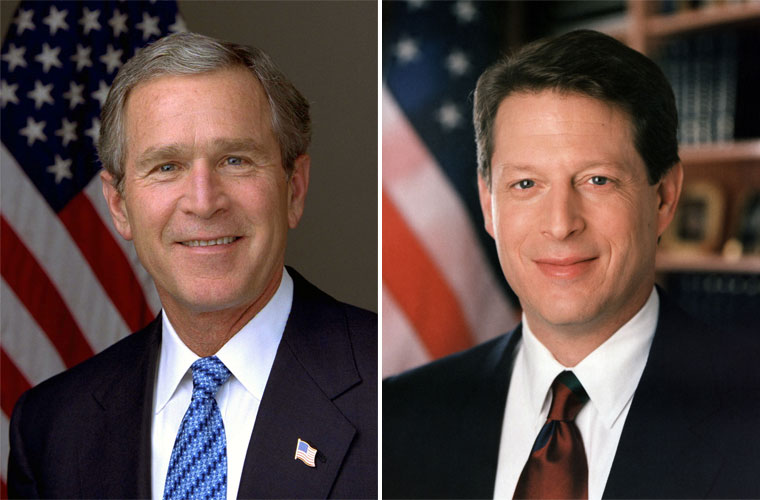
|
⇡ Back to top ⇡ |
2001 » |
If you enjoy our content, please consider sharing it:
References
1 Extinct ibex is resurrected by cloning, The Telegraph:
https://www.telegraph.co.uk/news/science/science-news/4409958/Extinct-ibex-is-resurrected-by-cloning.html
Accessed 3rd September 2024.
![[+]](https://www.futuretimeline.net/images/buttons/expand-symbol.gif)






